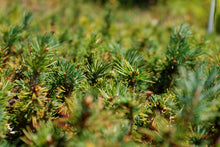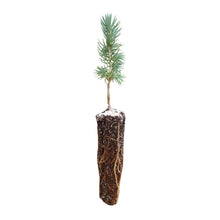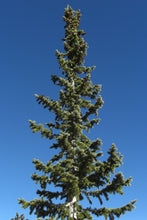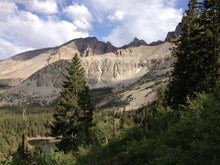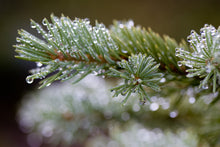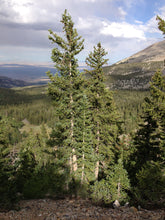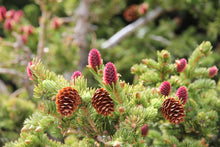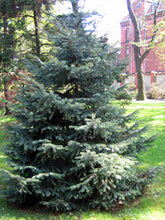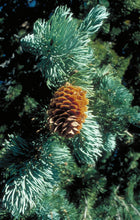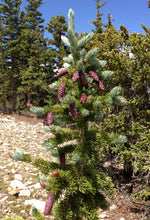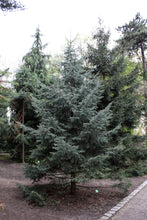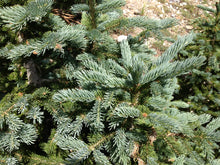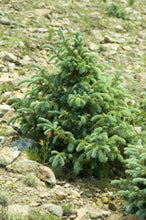
Picea engelmannii
-
Grow your own Engelmann Spruce, one of the largest high-mountain species in the western United States!
- Bulk tree deal for landscaping projects, windbreaks, restoration and reforestation work, and other large-scale plantings
- Seed-grown on California's Redwood Coast
- Transplanting and care instructions included
 |
Moisture Medium |
 |
Cold Hardiness -40°F |
 |
Light Full Sun / Partial Shade |
 |
Size 80 – 130' tall / 20 – 30' spread |
 |
Lifespan 600 yrs |
 |
Growth Rate Slow Growing |
 |
Drought Tolerance Low |
 |
Wind Resistance High |
About Engelmann Spruce
This slow growing tree, named for a German-Amerian physician and conifer authority from St. Louis, MO (George Engelmann, 1809-1884), showcases dark, blue-green foliage from top to bottom, short, compact branches, and a very narrow, spire-like form, perfect for sloughing off snow. Engelmann Spruce is usually a high elevation species, widely distributed throughout the mountains of the western United States and Canada, from central British Columbia and Alberta, throughout the Cascades and Rockies, and as far south as New Mexico and Arizona.
The Engelmann Spruce grows in one of the highest and coldest forest environments in the western U.S., and is one of the largest high-mountain species, achieving typical heights of around 100 feet tall, and exceptional heights of more than twice that height with trunks several feet in diameter. Despite its native alpine environment, this adaptable species can be cultivated in a wide range of locations — even in Hawai'i, for instance. The 1" to 3"-long cones have a thin, feathery quality and are pale tan in color, creating a striking contrast to the tree's dark, brooding foliage. This tree performs best in well-drained, loamy, organic, acidic soils in full sun. It tolerates wind quite well, and can thus be successfully used in windbreak plantings.
When crushed, Engelmann Spruce needles have a rank, stinky smell. Native Americans used this tree extensively for everything from construction materials to medicine. They even used the powerful-smelling needles, which they transformed into incense, perfume, and cleaning agents. Today, the wood from the Engelmann Spruce is appreciated mainly for its tremendous resonant qualities, which make it highly desirable for use in crafting piano sounding boards, guitars, harps, and violins.
About Jonsteen's Seedlings
All of our trees are seed-grown at our nursery on California's Redwood Coast, which is inspected monthly and licensed by the California Department of Agriculture. Trees can provide a natural barrier against high winds, temperatures, noise pollution and soil erosion, all while benefiting local air quality, wildlife and property values — a Jonsteen seedling will only grow in value and beauty!
About Jonsteen's Nursery Lots
Periodically, we offer great deals on bulk lots of select species to make room in the nursery for our new crop. It's a great way for us to keep things moving while rewarding our most prolific tree-planting customers. Are you thinking about a larger-scale landscaping, windbreak, restoration or reforestation project? This deal was made for you!
Seedling Size Chart: Small
Due to the dynamic nature of actively growing trees, as well as the tremendous variation between species’ growth rates, we rely on the cubic volume of a seedling’s root mass to determine its “size” (Small / Medium / Large / XL). Within each size there is minor variance — the dimensions provided here represent the category minimum. If exact measurements are essential, please contact us about current stock.














